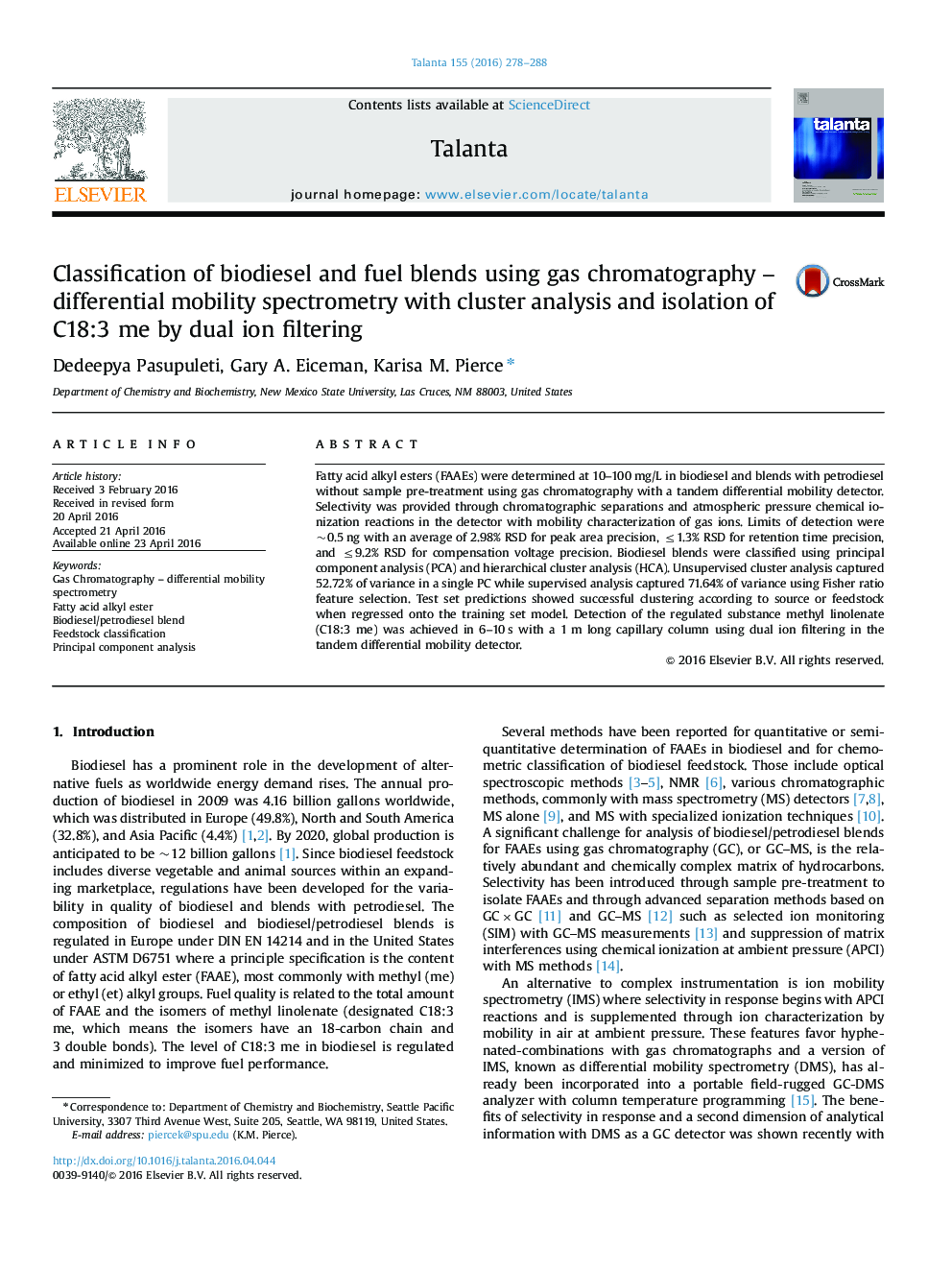| کد مقاله | کد نشریه | سال انتشار | مقاله انگلیسی | نسخه تمام متن |
|---|---|---|---|---|
| 1242442 | 1495780 | 2016 | 11 صفحه PDF | دانلود رایگان |

• Fatty acid alkyl esters quantified using GC-tandem differential mobility spectrometry.
• Biodiesel/petrodiesel blends classified by feedstock using GC-DMS, PCA, and HCA.
• Fisher ratio feature selection improved chemometric classification by PCA and HCA.
• GC-tandem DMS detected officially regulated methyl linolenate in under 10 s.
Fatty acid alkyl esters (FAAEs) were determined at 10–100 mg/L in biodiesel and blends with petrodiesel without sample pre-treatment using gas chromatography with a tandem differential mobility detector. Selectivity was provided through chromatographic separations and atmospheric pressure chemical ionization reactions in the detector with mobility characterization of gas ions. Limits of detection were ~0.5 ng with an average of 2.98% RSD for peak area precision, ≤1.3% RSD for retention time precision, and ≤9.2% RSD for compensation voltage precision. Biodiesel blends were classified using principal component analysis (PCA) and hierarchical cluster analysis (HCA). Unsupervised cluster analysis captured 52.72% of variance in a single PC while supervised analysis captured 71.64% of variance using Fisher ratio feature selection. Test set predictions showed successful clustering according to source or feedstock when regressed onto the training set model. Detection of the regulated substance methyl linolenate (C18:3 me) was achieved in 6–10 s with a 1 m long capillary column using dual ion filtering in the tandem differential mobility detector.
Fatty acid alkyl esters (FAAEs) were analyzed by gas chromatography (GC) with a tandem differential mobility spectrometer (DMS). FAAEs in blends of biodiesel with petrodiesel were selectively analyzed using atmospheric pressure chemical ionization reactions in the detector with mobility characterization of gas ions. Limits of detection were ~0.5 ng injected with average 2.98% relative standard deviation (RSD) for peak area precision,≤1.3% RSD for retention time precision, and ≤9.2% RSD for compensation voltage. The feedstock of biodiesel/petrodiesel blends was classified using principal component analysis (PCA) and hierarchical cluster analysis (HCA) with and without Fisher ratio feature selection supervision. Unsupervised cluster analysis captured 52.72% of variance in a single PC while supervised analysis captured 71.64% of variance. PCA and HCA models built using a training set correctly clustered independent test set samples based on biodiesel feedstock. Fast isolation and detection of methyl linolenate (C18:3 me), a specially regulated fuel component, was achieved in under 10 s with a 1 m long capillary column using dual ion filtering in the tandem DMS.Figure optionsDownload as PowerPoint slide
Journal: Talanta - Volume 155, 1 August 2016, Pages 278–288